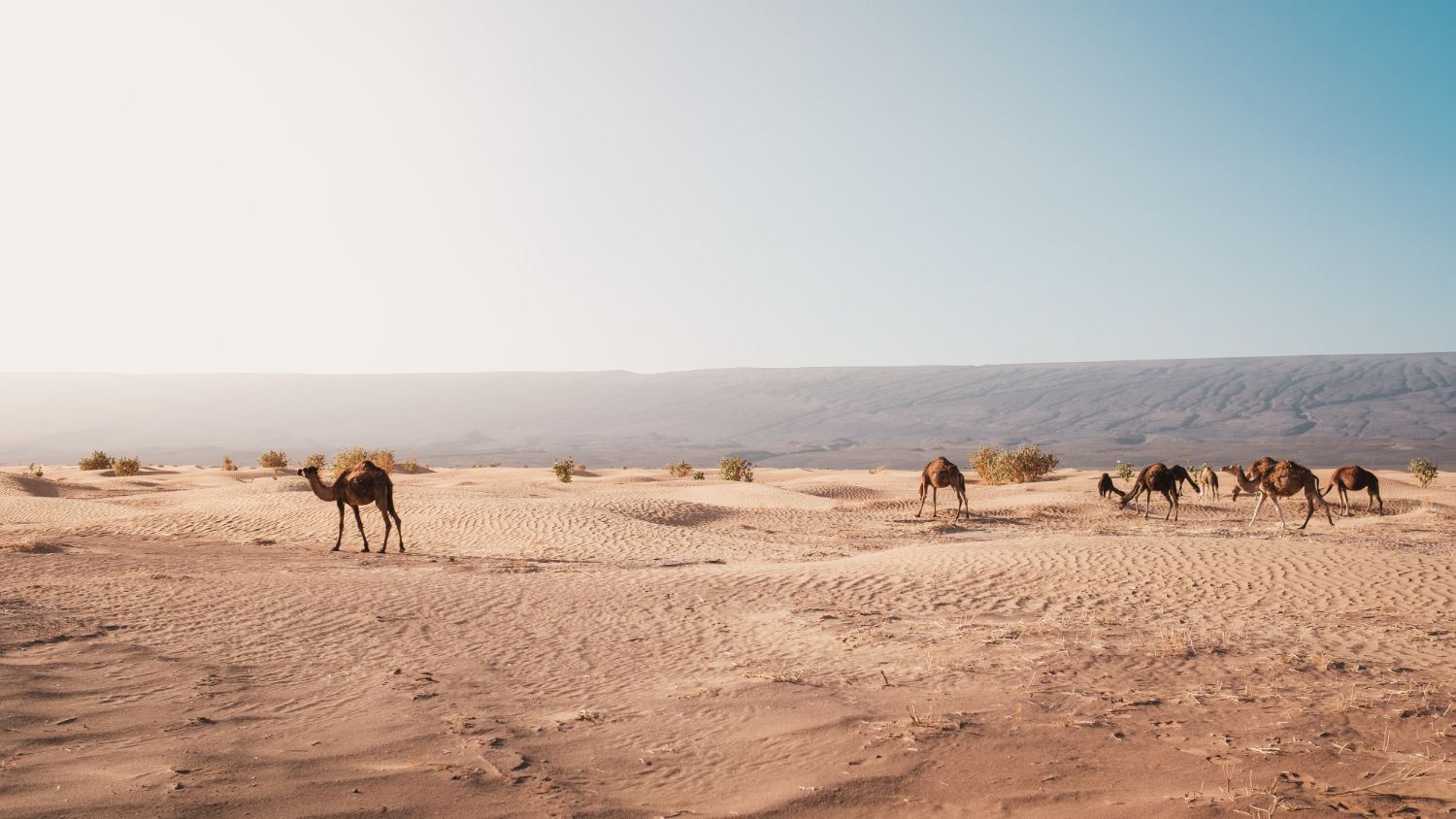Hello young explorers! Today, we’re venturing into the magical world of deserts to discover fascinating facts about animals in the deser that call these sandy landscapes home. So, put on your imaginary explorer hats and let’s dive into the intriguing world of desert creatures!
Facts about Animals in the Desert
Did you know that deserts are not just hot, but they’re also home to some of the coolest animals? There are countless animals in the desert, big and small, but scientists estimate that there are thousands of species adapted to desert life.
Desert Animal Adaptations
Desert animals are like superheroes with special powers to survive in their unique homes. They have adapted to the scorching heat and limited water in incredible ways. Some wear special outfits, like the Fenex Fox’s thick fur, to stay cool, while others, like the Camel, store water in their humps!
What are five features of desert animals?
- Special fur or skin to stay cool.
- Ability to store water in their bodies.
- Nocturnal behavior (being active at night).
- Efficient ways to dig for food and create shelter.
- Excellent senses to find food and avoid predators.
Main Types of the Desert
The main types are hot deserts, cold deserts, and coastal deserts. Each type has its own set of amazing creatures.
Hot Deserts
Hot deserts are like giant sunny ovens. One example is the Sahara Desert in Africa, where the sun heats up the sand, and it can get really, really hot during the day. Animals like camels and snakes have special tricks to stay cool in this scorching desert.
Cold Deserts
Cold deserts are a bit tricky because they can be icy and snowy. Take the Gobi Desert in Asia, for example. Even though it’s a desert, it can get really cold with frosty temperatures. Creatures like the snow leopard and Bactrian camel have to handle the chilly weather in this type of desert.
Coastal Deserts
Coastal deserts are where the land meets the sea, but they don’t get much rain. The Atacama Desert in South America is one such place. It’s not as hot as some deserts, but it’s still quite dry. Animals and plants here have to be tough to survive with only a little water from the ocean nearby.
Top 20 Amazing Desert Animals Facts
Let’s meet the A-list celebrities of the desert world! From slithery Snakes to the bumpy-skinned Horned Lizards, and the speedy Jackrabbit to the regal South African Lion, these animals rule the desert kingdom.
Camel
Camels are the kings of the desert with their humps that store water. They have long legs for walking in the hot sand and thick fur to protect them from the sun. Camels are excellent at surviving in the scorching heat and are known as the “ships of the desert.” They can go for a long time without drinking water, making them true desert experts.
Fennec Fox
The Fennec Fox is like a fluffy ball with big ears, perfect for hearing in the quiet desert nights. Their thick fur keeps them warm during cold desert evenings. These tiny foxes are expert diggers, making burrows to hide from the heat. Fennec Foxes are mostly active at night, using their keen senses to find food like insects and small rodents.
Kangaroo Rat
Despite their small size, Kangaroo Rats are excellent hoppers and can jump around like, you guessed it, kangaroos! They have cheek pouches to store seeds, their favorite desert snacks. Kangaroo Rats are mostly nocturnal, avoiding the hot daytime temperatures. With specialized kidneys, they can survive without drinking water for long periods.
Meerkat
Meerkats are known for being sociable creatures that reside together in groups known as mobs. stand tall on their hind legs, keeping watch for predators. Meerkats are skilled hunters, digging in the sand for insects and small creatures. They have sharp claws and keen eyesight to protect themselves from dangers in the desert. Despite being small, Meerkats are brave and work together to stay safe.
Desert Tortoise
Desert Tortoises are slow movers with a tough shell that protects them from predators. They are experts at conserving water and can go for a long time without drinking. These herbivores munch on desert plants and flowers. They dig burrows to escape the sun’s heat and hide from predators. Desert Tortoises have been roaming the deserts for a very, very long time!
Rattlesnake
Rattlesnakes are famous for the rattle at the end of their tails. They use this sound to warn others to stay away. With heat-sensing pits on their heads, they can detect prey in the dark. Rattlesnakes have fangs that inject venom into their prey to catch and eat them. They are expert hunters, patiently waiting for the right moment to strike.
Armadillo
Armadillos are like little tanks with tough armor made of bony plates. They use their strong claws for digging and finding insects. Armadillos can roll into a ball to protect their soft bellies from predators. These armor-plated creatures are mostly active during the cooler evenings and nights. Armadillos are excellent swimmers and can cross rivers and streams in search of food.
Horned Lizard
Horned Lizards are masters of camouflage, blending in with the desert sand. They have spiky horns on their heads for protection. When threatened, they can shoot blood from their eyes to scare away predators. Horned Lizards mostly eat ants, using their sticky tongues to catch them. These little warriors have unique ways to defend themselves in the tough desert.
Gila Monster
Gila Monsters are one of the only venomous lizards. Their bright patterns warn predators to stay away. They are slow-moving, relying on their colorful appearance for protection. Gila Monsters have a strong bite, and their venom helps them catch prey like small mammals and eggs. Despite their fearsome reputation, Gila Monsters are quite shy and prefer to avoid confrontation.
Cheetah
Known as the fastest land animals, Cheetahs have slender bodies and distinctive black tear stripes on their faces. They use their incredible speed to catch prey in the open desert plains. Cheetahs have sharp claws and strong jaws for a quick and efficient kill. These sleek cats are expert hunters, relying on their keen eyesight to spot potential meals from afar.
Sidewinder Snake
Sidewinder Snakes are desert specialists, moving in a unique sidewinding motion to navigate the hot sand. They have horns above their eyes, which give them a distinctive appearance. Sidewinders are nocturnal, staying hidden during the scorching daytime. These snakes are excellent at burying themselves in the sand to stay cool and avoid predators.
Thorny Devil
Thorny Devils are spiky desert residents with a unique way of collecting water. They have grooves on their skin that direct rainwater towards their mouths. These lizards are covered in thorny scales, providing protection from predators. Thorny Devils use their long, sticky tongue to catch ants and other small insects
Kangaroo
Kangaroos are not just found in Australia; some species also call the desert home. They have powerful hind legs for hopping across the arid landscape. Kangaroos are herbivores, munching on grass and plants. They can go without water for a long time, relying on the moisture in their food. Kangaroos are social animals, often seen in groups called mobs.
Red Fox
Red Foxes are adaptable creatures found in various environments, including deserts. They have a bushy tail and a reddish-brown fur coat. Red Foxes are omnivores, eating a diverse diet of small mammals, birds, fruits, and insects. They are known for their cleverness and can adapt to different conditions. Red Foxes are mainly active during the night, using their sharp senses to navigate the desert.
Hawk
Hawks are skilled predators soaring high above the desert. They have keen eyesight, helping them spot prey from great distances. Hawks have strong talons for catching and gripping their meals. They are efficient hunters, preying on small mammals and birds in the desert landscape. Hawks are known for their graceful flight and impressive hunting skills.
Desert Hedgehog
Desert Hedgehogs are spiky little creatures with a round body and a coat of sharp spines. They are nocturnal, venturing out at night to search for insects and small animals. Desert Hedgehogs can curl into a tight ball when threatened, protecting themselves with their spines. They have a keen sense of smell, helping them locate food in the dark. Despite their prickly appearance, Desert Hedgehogs are adorable desert inhabitants.
Jerboa
Jerboas are tiny rodents with long hind legs, allowing them to hop like kangaroos. They have large ears, providing excellent hearing in the quiet desert nights. Jerboas are nocturnal, avoiding the daytime heat. They have adapted to the desert by being efficient burrowers, creating homes in the sandy terrain. Jerboas mainly eat seeds and insects, using their sharp front teeth for gnawing.
Kestrel
Kestrels are small falcons that soar through the desert skies. They have distinctive markings on their faces and bodies. Kestrels are expert hunters, preying on small birds and rodents. They use their sharp beaks and talons to catch and consume their meals. Kestrels are agile flyers, able to navigate the open desert spaces with ease.
Antelope
Antelopes are graceful desert inhabitants with slender bodies and impressive horns. They have adapted to the arid landscape by being efficient grazers, feeding on grasses and plants. Antelopes are social animals, often seen in herds. They have keen senses, allowing them to detect predators and potential dangers in the vast desert expanse. Antelopes are well-adapted to the challenges of desert life.
Vulture
Vultures are large birds of prey that play a vital role in the desert ecosystem. They have bald heads and strong beaks for scavenging. Vultures feed on carrion, helping to clean the desert landscape by removing animal remains. They are often seen soaring high above, using their keen eyesight to locate potential meals. Vultures are essential for maintaining the balance of the desert ecosystem.
These are just a few of the amazing animals that have adapted to thrive in the challenging conditions of the desert. Each creature plays a unique role in the delicate balance of this harsh but beautiful environment.
So, dear young explorers, the desert is not just a sea of sand; it’s a magical place full of incredible animals with unique stories of survival. Keep exploring, and who knows, maybe you’ll discover a new desert creature one day!

